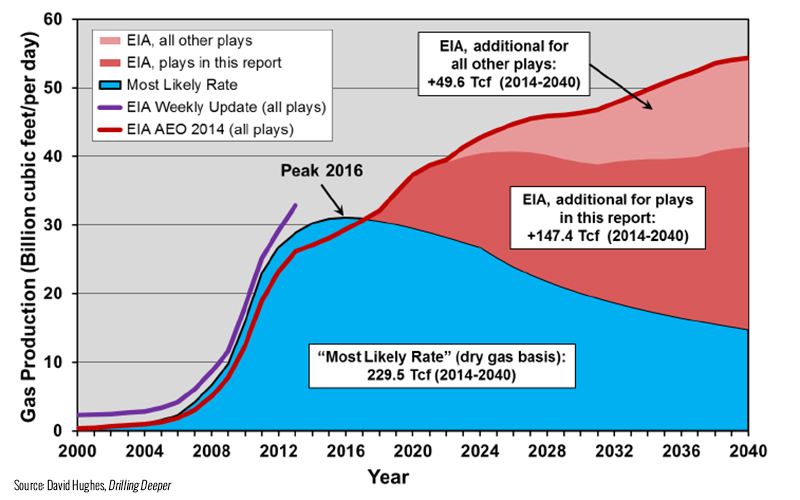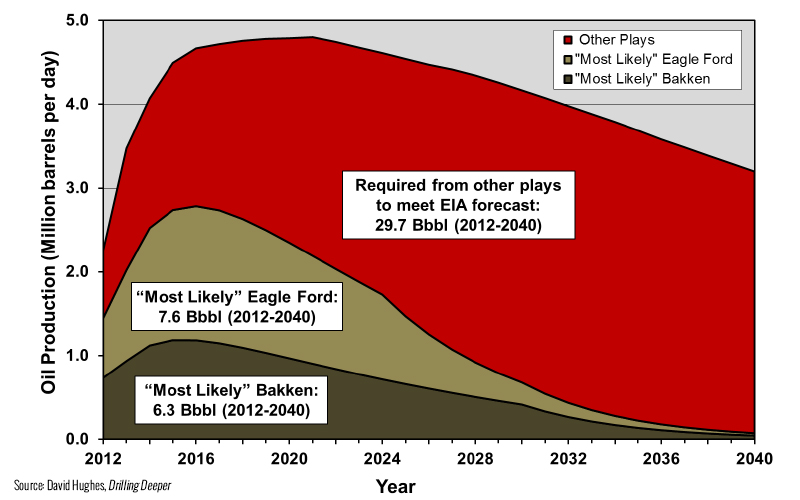Watch out for the Kool Aid
He was trying to create the next world war
He found a promoter who nearly fell off the floor
He said "I've never engaged In the kind of thing before
But yes, it can be easily done"
- Bob Dylan
And it's one, two, three
What are we fighting for?
- Country Joe
Greetings
Anyone who watches the nightly news is familiar with the "good looking natural gas gal". She walks around refineries explaining how great the US's energy situation is. The US is sitting pretty. We're kicking Saudi Arabia's butt ! We're number ONE! Yeah Baby.
This really appeals to red blooded male Americans and makes them feel pretty good. Those of you know a little about the energy situation, though might give her speech a slightly different reading. Here's one possibility. The price of natural gas in the US is too low, much lower than it is in the rest of the world. Its hard to make money at that price. The gas companies would prefer to sell the gas a higher price. Either here, or elsewhere. (Current price in US - $3; in Eu $8, and in Japan $16 - here ) So, they want to build export terminals. But first they have to convince the American public, that we've got so much gas we can meet our own needs and sell to Europe, to Ukraine, and to Asia.
You might contrast this with a nice presentation from Art Berman, which is quite funny, and very informative. Here are the slides And he succeeds in putting the pretty gal's rhetoric in perspective. Yes, the US is producing more than SA. But we are not "oil independent " by any stretch. We still import 44% of the oil we consume. And even according to the EIA, we will probably never be "oil independent" - Starting in 2016 when shale oil peaks, we will import a greater and greater percentage each year. Forever.. Yes we are producing oil faster than SA, but doesn't mean we have more to produce. In terms of reserves, we are not number one.....or number two. We are number 10.
The gas story, is not quite as bad, but it's has the same idea. We produce enough to meet our own needs, but not for long. (Although the EIA says we have 100 years of supply , or maybe 40 - Little known fact - the EIA has no geologists on staff) According to independent studies by geologists such as the University of Texas study, and a study by David Hughes (Drilling Deeper), US gas production will peak in the early 2020's . Or perhaps sooner, if we start shutting down coal plants? see Flurry of Coal Power Shutdowns Expected by 2016
Now, as it turns out most of our political leaders, and opinion makers, are in fact red blooded American males. And they prefer the story that the pretty natural gas lady is telling. Perhaps that explains the fact that they are beating the drums of war with Russia. And the media, ever vigilant, is constantly letting us know just how bad the Russians really are. But see here, for a different view, (from a Pulitzer Prize nominated investigative reporter). I just hope we don't have another "Gulf of Tonkin" event (or non -event)
The energy angle is, of course natural gas. Russia supplies a good portion of Europe's natural gas consumption. If those shipments were interrupted, could the US step in? Don't count on it. Below Richard Heinberg suggests that if we are relying on "surplus" US natural gas to bail out the Europeans, we may have a surprise coming.
Berman has an interesting spin on the oil business. He looks at the public filings of the shale drillers. Cumulatively they have $17 trillion in debt, and they expect to pay it with negative cash flow. In the first 3/4 of 2014 (before the price crashed) they lost $14 billion. In 2013 they lost $13 billion. They spend $1.20 and make a $1.00. This is not a model than can work for long. These companies were in trouble when oil was selling at $95. How high will it need to go for them dig out of this hole?
But it is working now, because the companies can continually roll over the debt, and the lenders are "betting on the come". They are convinced that there is lots of oil in the ground, to the loan is secured by a "real asset". The company may go broke, but the asset remains. But the asset has to really be there, and the price of that asset has stay high enough to make money. Right now, it isn't.
---------------
Is the US Overplaying Its Energy Hand?
In the grand poker game of geopolitics, energy is often the wild card. That’s why the Middle East is such a mess: Great Powers (first Britain, more recently the United States) have been installing, propping up, toppling, threatening, or bribing regimes in that region — almost always to the detriment of indigenous populations — ever since the first oil discovery there prior to World War I.
Oil and natural gas interests are clearly implicated in current turmoil in or around Libya, Iraq, Syria, and Iran—and also Ukraine. In each instance it requires some historical context to understand the peculiarities of the situation; let’s focus for a moment on the last of these countries.
Ukraine has long been a transit route for Russian gas destined for Europe. The fact that Russia is an energy superpower is frustrating to Anglo-American geopolitical strategists, who see Eurasia as the key square on the “grand chessboard” (to use Zbigniew Brzezinski’s phrase) for maintaining global dominance. Hence their strategy of hemming Russia’s western flank with NATO bases, and their more recent tactic of subverting the constitutional (although thoroughly corrupt) Ukrainian government of Viktor Yanukovych (via injections of CIA cash to foment violent demonstrations) and immediately legitimizing the coup that overthrew him. Washington evidently would like either to control or to destabilize and weaken Russia; this, after all, is the way the West has dealt for decades with energy exporters in the Middle East. If Moscow won’t be the next Riyadh or Kuwait City, then let it become the next Tehran. This strategy makes many people in Europe nervous: they don’t much like dependency on Russia for energy imports, but they positively dread the prospect of being somehow cut off from needed supplies of natural gas.
This is clearly a dangerous game. Russia still has a formidable nuclear arsenal, and Europe’s economy is too important to toy with. However, American geopolitical strategists evidently think they have grounds for strategic boldness. In the last few years, the United States has begun hinting broadly that Europeans have nothing to fear from joining enthusiastically in an anti-Russia campaign: if push comes to shove, America could fill pipelines extending all the way from Bulgaria to Ireland with natural gas originating in the fracked shales of Pennsylvania, Texas, Oklahoma, and Louisiana. Indeed, there’s supposedly so much of the stuff that customers in Japan and South Korea might as well start preparing to luxuriate in liquefied natural gas (LNG) from the good ol’ USA, too. Some boosters of the American domestic energy industry even suggest the country might become such a significant oil exporter that it supplants the global roles of OPEC and Russia. (Here’s Jeb Bush, exhibiting his family’s famously elegant syntax in a Chicago speech last week: “As we grow our presence by growing our ability to produce oil and gas, we also make it possible to lessen the dependency that Russia now has on top of Europe.”)
There’s just one flaw in this plan: there probably isn’t and won’t be enough natural gas to enable US exports of any significant magnitude. And certainly not enough oil.
On the surface, there seems to be evidence to support the claim of resource abundance. According to projections from The Energy Information Administration (EIA), the statistical arm of the United States Department of Energy, shale gas production in 2040 will be 40 percent higher than it is currently, while tight oil production will declined only moderately from its current 4 million barrels per day to 3.2 million barrels per day.
However, these projections are disputed by many veteran analysts, notably including a prestigious team of geoscientists from the University of Texas, independent petroleum geologist Art Berman, and David Hughes, who is associated with my organization, Post Carbon Institute, and has spent most of his career studying the energy resources of Canada. These skeptics point out that shale gas and tight oil wells typically decline rapidly (with production dropping roughly 70 percent in the first year), and that production tends to be profitable only within core areas (“sweet spots”) within much larger fuel-bearing geological formations. As these sweet spots are drilled out, each “play” will enter production decline (as has already occurred in the Haynesville and Barnett shale gas regions).
Further, horizontal drilling and hydrofracturing—techniques used to wring oil and gas from shale and tight reservoirs—are expensive, so oil and gas prices need to be at historically high levels to justify them. During the last decade, the depletion of conventional oil and gas in North America and elsewhere around the world forced oil and gas prices up to economy-crushing levels. With a barrel of crude selling for $100 or so, the application of extreme extraction technologies to produce oil from low-quality reservoirs began to make sense. But the business also entailed a lot of risk and required staggering levels of debt. Historically rock-bottom-low interest rates plus boatloads of hype made it possible for small, risk-friendly companies to raise the needed capital.
One of the biggest risks of this business model was that oil prices would fall, which is exactly what has happened during the past six months. Despite all the recent talk of “cheap oil,” current prices (at about $50 a barrel) actually align with the long-term inflation-adjusted historic average—but that’s too low a price to make fracking for tight oil profitable, and drilling rigs are falling idle.
The oil price collapse has also wrecked prospects for profits from American LNG exports. In much of the world, natural gas prices are tied to oil prices. When oil prices were stratospheric, gas prices in Europe and Asia were so high, relative to North American prices, that spending money on building export terminals and tankers, and on cooling and pressurizing trillions of cubic feet of methane, seemed to make economic sense. Now that world oil prices have fallen by half, the difference between US and rest-of-world gas prices is not large enough to justify such investments.
The skeptics say the EIA has not taken these problems seriously and doesn’t integrate them properly into its forecasts. In his landmark report Drilling Deeper, Hughes notes that “The EIA, which is viewed as perhaps the most authoritative source of US energy production forecasts, has consistently overestimated future production.” (Others have made the same observation.) He continues:
“The EIA’s forecast strains credibility, given the known decline rates, well quality by area, available drilling locations, and the number of wells that would need to be drilled to make that [forecast rate of production] happen.”

Most Likely Drilling Rate Gas Production from Major Shale Plays through 2040 compared to EIA Shale Gas Forecast. Source: Drilling Deeper
While the EIA sees US shale gas production growing through 2040, Hughes forecasts: “Production from these plays peaks in 2016 at nearly 34 Bcf/d and declines to below 16 Bcf/d by 2040, or [by] more than 50%.” This is an enormous difference: if the EIA estimate is accurate, there is indeed the possibility of gas exports—though that would require the oil/gas price differential to increase; and even then there would not be nearly enough gas to supply all of Europe’s needs, in addition to those of American customers. But if Hughes is right, natural gas exports are laughably unlikely and the United States is probably headed into a gas supply crisis in the next decade.
Hughes sees US tight oil production rates topping out around the same time as those of shale gas (i.e., before 2020), and declining much further and faster than the EIA estimates.

Most Likely scenario projections of oil production for the Bakken and Eagle Ford plays with the remaining amount of production that would be required from other plays to meet the EIA’s total reference case forecast. Source: Drilling Deeper
Why should we believe David Hughes rather than the EIA? Read his report for yourself: it’s thorough, transparent, and logical—something that cannot be said for the forecasts in the EIA’s latest Annual Energy Outlook. And while EIA has been wrong in its production forecasts more often than it has been right, Hughes is building an impressive track record. In 2011, the EIA published a report estimating the size of the oil reserves in California’s Monterey shale basin at over 15 billion barrels; surely high rates of production would soon boost the Golden State’s economy. With help from PCI, Hughes prepared a thorough geological review of the basin and concluded that the EIA estimate was dramatically overstated. The EIA subsequently downgraded its estimate by 96 percent, to 0.6 billion barrels. And the promised Monterey shale production boom has not materialized.
Even normally insightful energy commentator Michael Klare seems to have bought into to the new narrative of US resource abundance. In a recent article he critiques Republican plans to create “a North American power bloc capable of aggressively taking on Russia, China, and other foreign challengers,” and implicitly accepts that it is physically possible for such plans to work. It would have been useful to his argument against US energy imperialism and continued fossil-fuel energy dominance to point to evidence that North America simply doesn’t have sufficient resources to support oil or gas exports, but nowhere does he hint at this.
Commentators and politicians believe the EIA because they assume it is the highest authority on the matter. That’s understandable. But do the current policy makers in Washington — in the State Department, Pentagon, and CIA — also privately stand behind official production forecasts? Or is all the talk about the US using oil and gas exports to neutralize Russia’s influence just a bluff?
If they do believe their own talking points, they have embarked on a game they cannot win by making promises they probably cannot even begin to fulfill.
If they don’t believe the hype — that is, if this is all a bluff — then it is a deeply cynical strategy (in the very worst sense of the word). Instead of helping prepare America, Europe, and the rest of the world for an inevitable post-hydrocarbon future, these policy makers are using exaggerated resource estimates merely to score points in a game, while the global arena in which that game is being played is about to be engulfed by economic and ecological catastrophe.
My guess is that the Washington power brokers really believe what they are saying. The level of energy literacy among policy makers is abysmal. And with the EIA feeding them misinformation, what else are they to do but try to use it to their advantage? After all, the message of resource abundance is what they want to hear and believe.
This is how empires crash: the folks in charge pay their information ministries to come up with only good news; rulers act on the basis of unrealistic assumptions; reality bites; and when it does, no one is prepared.
The evidence suggests the United States is playing energy poker with a pair of jacks in its hand, but betting as if it had four aces. Washington can only hope the rest of the world is populated with terrible and unlucky poker players; otherwise, this game could end in bitter feelings at best, gunfire at worst.
Labels: Art Berman, heinberg, natural gas. peak oil, Putin, war Russia


0 Comments:
Post a Comment
Subscribe to Post Comments [Atom]
<< Home